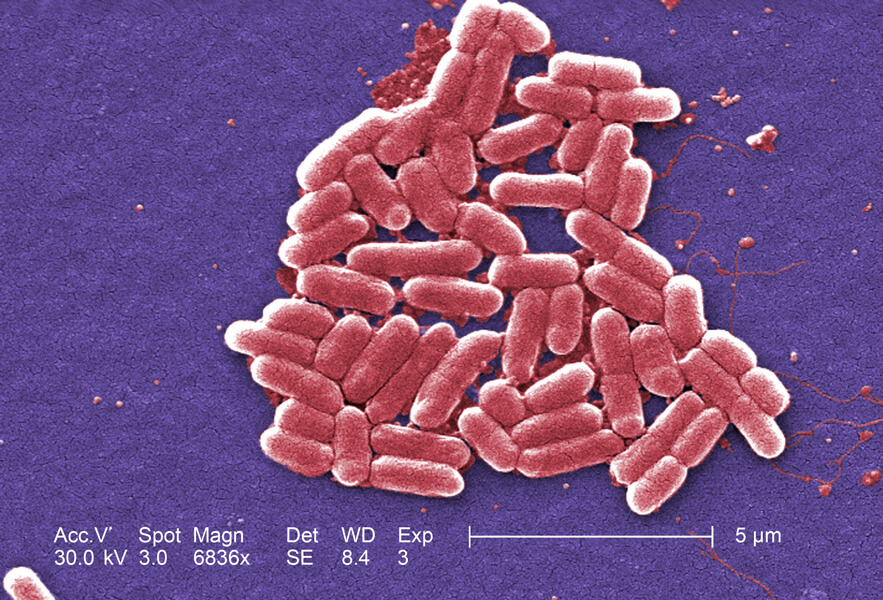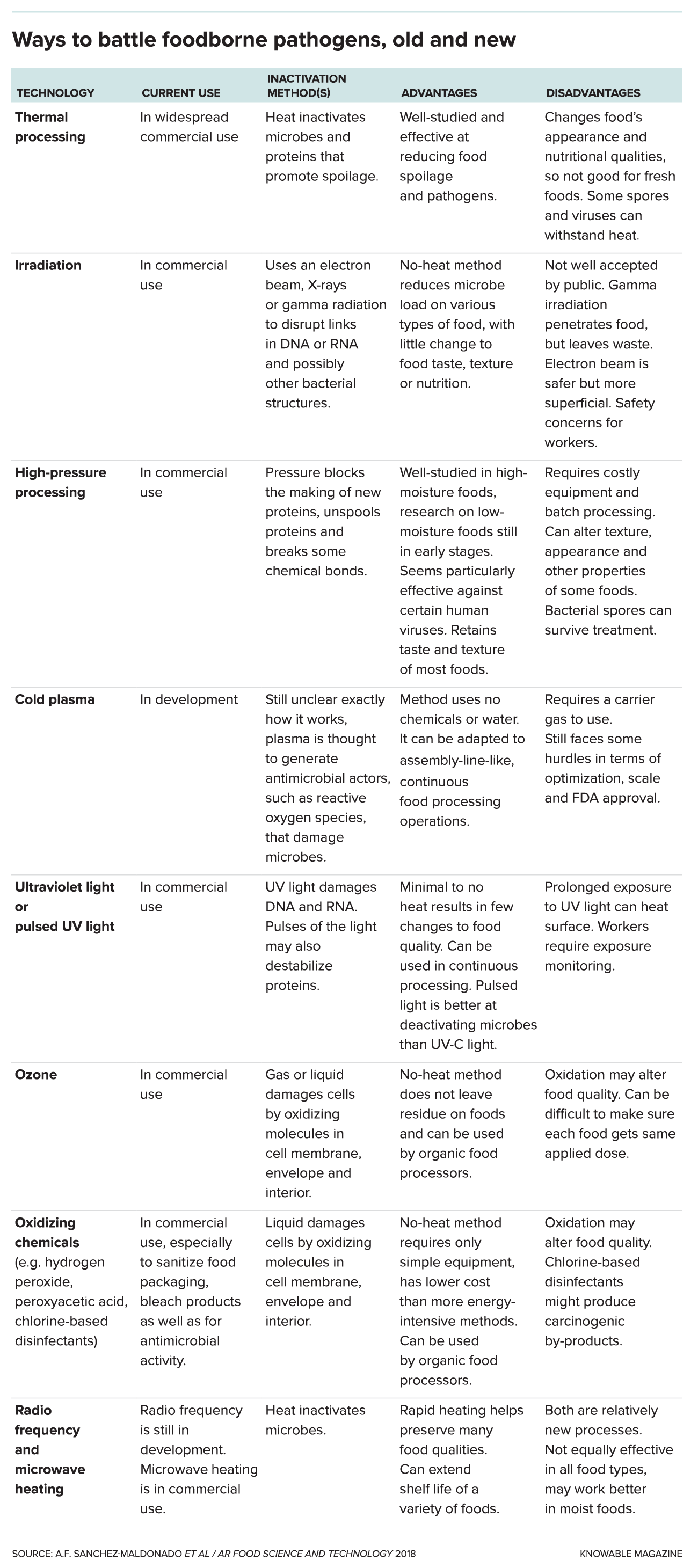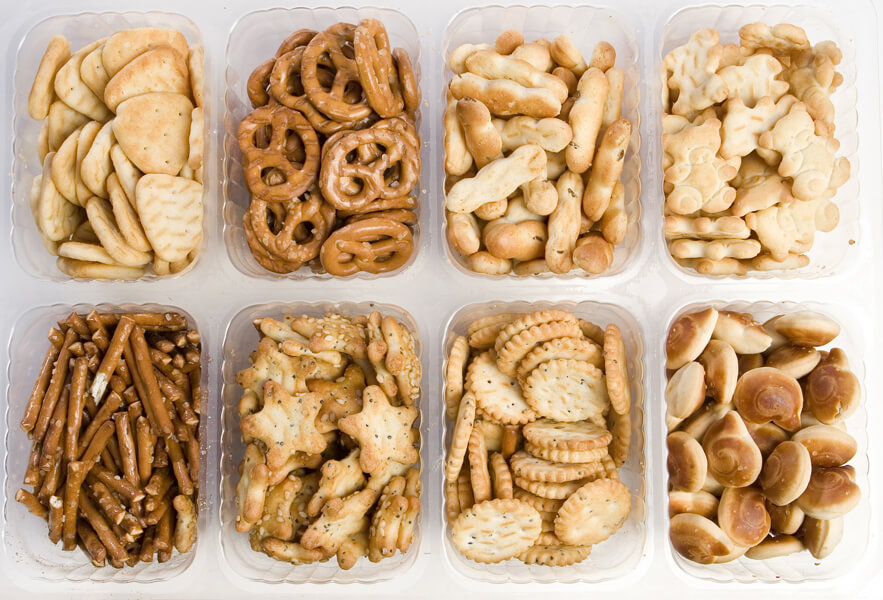Nearly every month, it seems, comes a new report. In March, there was news of contaminated romaine lettuce, which eventually led to five deaths and sickened over 200 people across the US and Canada. In May, about 100 people in California got sick after eating raw oysters shipped from British Columbia. Then, at the end of July, the baking company Pepperidge Farm issued a recall for a few flavors of its seemingly innocuous, kid-friendly snack, Goldfish crackers.
And the list goes on. At first blush, lettuce, oysters and Goldfish might not seem that similar — but they and a host of other foods, even such things as peanut butter, baby formula and potato chips — can all harbor safety risks. The romaine, shipped from Yuma, Arizona, was contaminated with Escherichia coli O157:H7. The raw oysters were contaminated with norovirus, a pathogen responsible for most foodborne illnesses in the US. The Goldfish snacks? They were recalled because Pepperidge Farm thought one of the seasoning ingredients might contain Salmonella.
The US Centers for Disease Control and Prevention estimates that each year one in six Americans gets sick after eating contaminated food, and over the past decade, the average annual number of food recalls has steadily climbed. A surprising array of food groups — from fresh produce and meat to packaged dry items — has been recalled after outbreaks or customer complaints, or when random testing turned up spores of bacteria or traces of viruses that can cause food poisoning. These pathogens include Salmonella, Listeria, Shigella, norovirus and the especially dangerous E. coli O157:H7. In 2017, there were 456 food recalls, about a third of which were due to microbe-related contamination, according to a report by Food Safety Magazine. (Many recalls are issued if a food might include — or have come into contact with — unlabeled potential allergens.)

Among the microbes on food scientists’ most wanted list is Escherichia coli O157:H7. The bacterial strain can contaminate foods and produces a shigella toxin that can be deadly.
CREDIT: JANICE HANEY CARR / CDC
The rise in recalls may partly be due to an uptick in vigilance and sensitivity. “We’ve really advanced in science, and have better methods for detecting outbreaks,” says Jeff Farber, a food microbiologist at the University of Guelph in Canada. Indeed, the United States and Canada have some of the safest food supplies in the world, mostly owing to strong federal surveillance systems, he says.
But despite this watchfulness, and the existence of food preservation technologies such as thermal processing and irradiation that normally work well, people can still sicken and die from contaminated food. Existing technologies can’t deal with all threats. Plus, new concerns over controlling viruses, a small uptick in recalls of dry foods, the high costs of safety recalls, and a shifting public appetite for more fresh foods have all created an urgent need for food researchers to seek new approaches, scientists say.
The challenge is to find scalable techniques that destroy microbial threats while preserving flavors and nutritional value. That’s not easy, since many methods that kill microbes also tend to degrade vitamins or change a food’s structure — boiling lettuce will help clean it, but the resulting slop might not appeal to salad lovers.
Among the many routes to food sterilization now being explored — everything from microwaves to pulsed UV light and ozone gas — two emerging technologies are attracting a lot of interest: cold plasma and high-pressure processing. Neither method will solve everything, but both could help improve the safety of the food supply.

Bringing the heat
To kill pathogens, US food manufacturers primarily turn to thermal processing, a technique that uses high temperatures to knock out potentially dangerous bacteria and viruses. The method can assure food safety and keep processed foods on the shelf longer, but works best for canned and frozen foods, precooked meats such as hot dogs, and various pasteurized and processed products, since it can distort the food’s texture, color and nutritional content. Thermal processing won’t work for fresh produce, and thus couldn’t have helped prevent the extensive E. coli outbreak linked to contaminated romaine.
Produce presents special challenges for scientists because of its fragility. “There’s a lot of things you can do with dried foods, meats and poultry that can’t be applied to produce,” says Brendan Niemira, a food microbiologist at the US Department of Agriculture’s Agricultural Research Service in Wyndmoor, Pennsylvania. “We want to improve the safety of the food, but we still want to preserve the quality of the food: The berries have to look and smell good.”
Niemira has been searching for better ways to keep pathogens off fruits and vegetables for nearly 20 years, and his attention has now turned toward cold plasma — what he and others sometimes call the “purple blow torch.” Interest in the method has been growing over the last decade: In one 2010 study, food scientists in Germany were able to get rid of more than 99.99 percent of some strains B. subtilis that cause food poisoning with 20 seconds of plasma treatment.
Cold plasma processing
Plasma is a charged gas. Plasmas create the glow of neon signs and high-tech televisions. The sun is made of hot plasma. In food safety circles, however, scientists work with plasmas that have much lower temperatures. Cold plasma — a very reactive substance made up of photons, free electrons and charged atoms and molecules — can inactivate microorganisms without heat. (The word cold is relative to other types of plasma and can be misleading. Many cold plasma reactions are done at room temperature.)
>k_subscribe_ad<>/k_subscribe_ad<Different sorts of cold plasma can be generated, depending on the gas you start with (common carrier gases include nitrogen and noble gases like helium, argon and neon) and the source of energy used to shift the gas into a plasma (electricity, microwaves and lasers all work). In the lab, scientists create a plume of plasma that interacts with the food, much like a blowtorch but without the heat. Some of the molecules in the plasma have antimicrobial activity. Reactive oxygen species can disintegrate bacterial cell membranes.Reactions within the plasma may also generate energy in the form of visible or UV light. The UV light, in turn, can damage DNA and other structures that help microbes survive.
Overall, “it’s a relatively inexpensive process that’s going to be chemical-free, residue-free, and doesn’t use any water,” Niemira says.
Cold plasma appears promising in the lab. But more work needs to be done before it will see widespread use. For one thing, it’s not yet approved for commercial use by the US Food and Drug Administration, which needs to see studies on how cold plasma affects food. Research is still in its early stages. “Our understanding is that the research about cold plasma in food has focused on its antimicrobial efficacy,” says FDA spokesperson Peter Cassell. “The FDA is not aware of research exploring other effects that would be important from a regulatory perspective, such as the chemical, toxicological and nutritional effects on the food.”
In addition to continuing to study applications of cold plasma, Niemira and others are looking to combine cold plasma with existing approaches such as high-intensity light, high pressure and chemical sanitizing processes to most efficiently kill as many pathogens as possible.

Crackers, like other dry foods, contain little water, and so have long been thought of as resistant to microbial growth that can cause spoilage or contamination in moist foods. A recent uptick in outbreaks in low-moisture foods, however, has triggered a renewed interest in finding ways to better sanitize these long shelf life foods.
CREDIT: VLAD AGESHIN / SHUTTERSTOCK
Under pressure
People commonly think that dry foods are safe, but that’s not necessarily true. Documented outbreaks in what are known in the field as low-moisture foods — cereals, dried fruits and vegetables, condiments and spices — have increased in recent years, as Farber writes in the 2018 Annual Review of Food Science and Technology. He links the increase to a growing awareness of dry foods’ susceptibility to foodborne pathogens and better detection methods.
One promising technique is high-pressure processing (HPP) — a mechanical process that applies a huge amount of pressure to food. HPP can retain the flavor and nutrition of foods, so researchers see it as another way to control microorganisms without heat in low-moisture food, meats and even some vegetables. (Tomatoes, for example, may hold up to HPP, but fragile leafy greens would not.) HPP is especially promising for inactivating viruses, which tend to be more resistant than bacteria to many current methods. It can also give foods a longer shelf life.
HPP is actually an old idea. Agricultural researcher Bert Holmes Hite first reported using it in 1899, while looking for ways to reduce spoilage in cow’s milk. He found that moist foods — such as fruit juices, meats and fruits — could be decontaminated when subject to nearly 6,500 times standard atmospheric pressure at sea level for 10 minutes.But because it was so difficult to manufacture the equipment for this technology, research was discontinued for nearly a century until it picked up again in Japan in the late 1980s.
High-pressure processing is most commonly done in batches, where samples are put inside flexible pouches or containers before they are loaded into the pressure vessel. The processors use fluids such as water or oil to generate high amounts of pressure, which acts uniformly on the food that’s being decontaminated to destroy or disable bacteria and viruses.
High-pressure processing is already in commercial use around the world to pasteurize and/or preserve foods, including jams, fresh oysters, fruit juices and ready-to-eat meats. The method also appears especially promising in inactivating foodborne viruses, such as hepatitis A, norovirus and rotavirus.
HPP has been shown to inactivate hepatitis A virus, the mouse version of norovirus and other viruses in minutes. Poliovirus, however, appears able to withstand even high pressures for extended time periods.
Unlike cold plasma, HPP is FDA-approved and in commercial use for some food products, such as salsa, jam, guacamole and fruit juices. Now, researchers are working out ways that HPP can be used for low-moisture foods such as cocoa, flour and raw almonds as well.Some oyster producers have embraced HPP since it can get rid of pathogens, as well as make it easier to shuck the shellfish.
Scientists don’t fully understand how HPP inactivates bacteria and viruses while leaving the food intact. They know that the method attacks weaker chemical bonds that may be crucial for the functioning of bacterial enzymes and other proteins. But HPP has limited effects on covalent bonds — so the chemicals that affect color, flavor and nutritional value of foods are left mostly intact. And because plant cell walls are sturdier than microbial cell membranes, they appear to withstand high pressure better.
Despite the promise of HPP, one of the main barriers to widespread commercial adoption is cost. Farber quotes a price tag of about a million dollars for a single HPP unit. The process will also need to be optimized for different types of foods, with data provided to the FDA.
Killing pathogens is one piece of puzzle
Sanitizing food, in any case, is just part of the food-safety picture, scientists stress. If a food item is deeply contaminated, even the best tech might not be able to sanitize it completely. Lettuce, apples and other produce are grown in an open environment, and are exposed to many potential pathogens. In some cases, outbreaks have been traced back to basic sanitation errors, such as employees failing to wash their hands. “Food safety doesn’t have one magic bullet,” says Karina Martino, a senior program manager for food processing at the Grocery Manufacturers Association, a US food industry trade group.
High-pressure processing disrupts viruses, as shown in the before-and-after transmission electron microscopic images above. At top, purified samples of mouse norovirus and two forms of human rotavirus, from left, appear intact before undergoing treatment (of 350 MPa to 450 MPa for 2 minutes at 4 degrees Celsius). Treatment damaged the viral structures, leaving them unable to infect a cell.
CREDIT: F. LOU ET AL / AR FOOD SCIENCE AND TECHNOLOGY 2015
The simplest way to make food safe, scientists say, is to make sure it doesn’t get contaminated in the first place. Once pathogens end up in food, the door is wide open for cross-contamination. If produce is washed in large batches, a pathogen can spread all over the equipment and into previously uncontaminated food, leading to a massive outbreak. “Instead of having one pound of contaminated lettuce, you’ve got a million pounds of it,” Niemira says.
And then you have a mess on your hands. It took months for researchers to understand the source of the romaine lettuce outbreak — by the time they figured out that tainted water from a nearby cattle feedlot had contaminated the produce, the outbreak had spread to 36 states in the US, and several provinces in Canada.
Any one tool, be it HPP or cold plasma, will not be the only answer, says Niemira, and may never make our food 100 percent safe. But with them, he adds, “we can have an extra level of security and safety before it reaches the consumer.”




